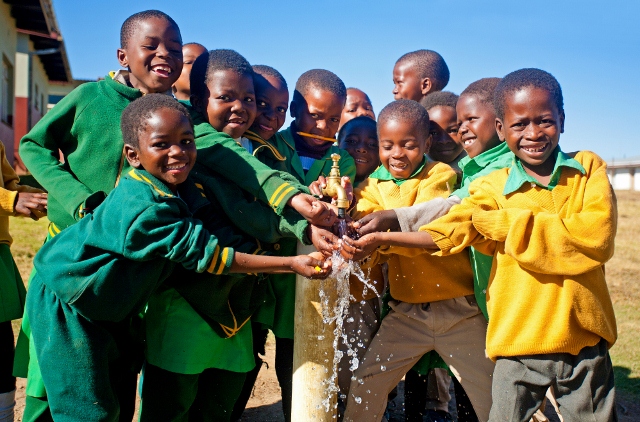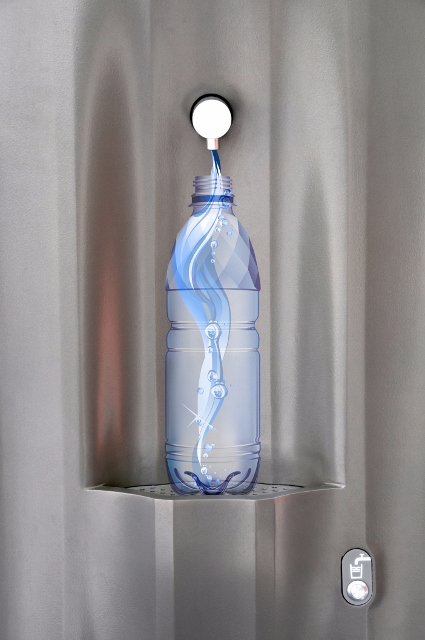Living in the Korogocho slum, a small settlement on the outskirts of Nairobi, Kenya, is not easy. Think crowds, no running water or sanitation, minimal electricity, and widespread crime. Furthermore, property rights are limited, at best, and most goods and income are amassed in the underground marketplace.

The lack of secure property rights together with costly permitting discourages infrastructure investment to enhance water and electrical development. According to Buz Weas, President of HabiHut, more than a billion people lack access to clean drinking water and about 500 million cell phone users have no access to electricity to charge their phones.
Imagine a world where women and children could work and attend school instead of searching for water. A world where phone communication provides information about agriculture commodity prices, delivery services, and weather forecasts that can enhance crop production and market response.
That world is emerging with innovations from companies such as HabiHut of Belgrade, Montana.
This small firm has developed a non-permanent modular kiosk that helps filter water and provides solar lighting and electrical access. As a temporary structure, this kiosk avoids the often-complicated permitting process required for building. And shipped in a four by eight foot package, the unit can be assembled in a single day. Purchase of a HabiHut kiosk gives entrepreneurs the ability to provide low cost clean water and electricity.
Three pilot HabiHut water kiosks were installed in Kenya last year. After only three months the huts proved to be financially viable. On average, they provided services to 2,600 customers. Most were purchasing water but about 15 percent bought electricity to recharge cell phone batteries.
Extending from the success of the experimental sites, the Hunter & Stephanie Hunt Institute for Engineering & Humanity has joined with HabiHut to create the “Hot Spring Micro-Franchise.” The franchise requires a small investment from entrepreneurs to purchase a water kiosk and has high hopes of encouraging entrepreneurial activities. By combining environmental and social entrepreneurship, HabiHut is providing the provision of basic necessities in the developing world and collecting a profit to do so.
For more information: www.thehabihut.com
WATER STATIONS

This environmental consciousness is moving people from disposable to reusable bottles and entrepreneurs are taking notice. Filtrine Manufacturing Company, established in 1901, is known as a problem solver in the water industry. Filtrine claims to be the original producer of bottle-filling water stations. The company produces what historically were drinking fountains but are now designed or retrofitted to fill reusable bottles.
Filtrine is not alone. Responding to consumer demand for clean water at a low price, multiple producers are supplying bottle filling stations. Those who use water stations choose to make environmentally conscious decisions, with an added cost savings benefit. The stations are a cost savings for companies that provide five-gallon office jugs and bottled water for employees. They also reduce maintenance expenditures by reducing the amount of garbage created.
Water bottle-filling stations were introduced at the O’Hare International Airport in 2010. Faucetless drains have been installed a t security check points encouraging people to empty bottles rather than dispose of them when passing through security. Bottle-filling stations were placed just inside the terminal for refill. The new faucets are not just a convenience for travelers but they have provided “green” recognition for the airport and lowered costs. It is estimated that each station reduces trash by 29 tons.
Demonstrating their efficacy, bottle-filling water stations are also popping up in businesses, golf courses, ski areas, health clubs, and schools. Given the demand for such stations, there is no need for government to require bottle-filling taps or to outlaw plastic bottles. Of course, there are still officials that feel the need to step in. San Francisco is considering a city ordinance that would require new and renovated buildings with drinking fountains to retrofit them with bottle-filling water stations. Ironically, this move might discourage drinking fountains entirely—motivating more, rather than less, consumption of bottled water and substitute drinks.
For more information: www.filtrine.com




